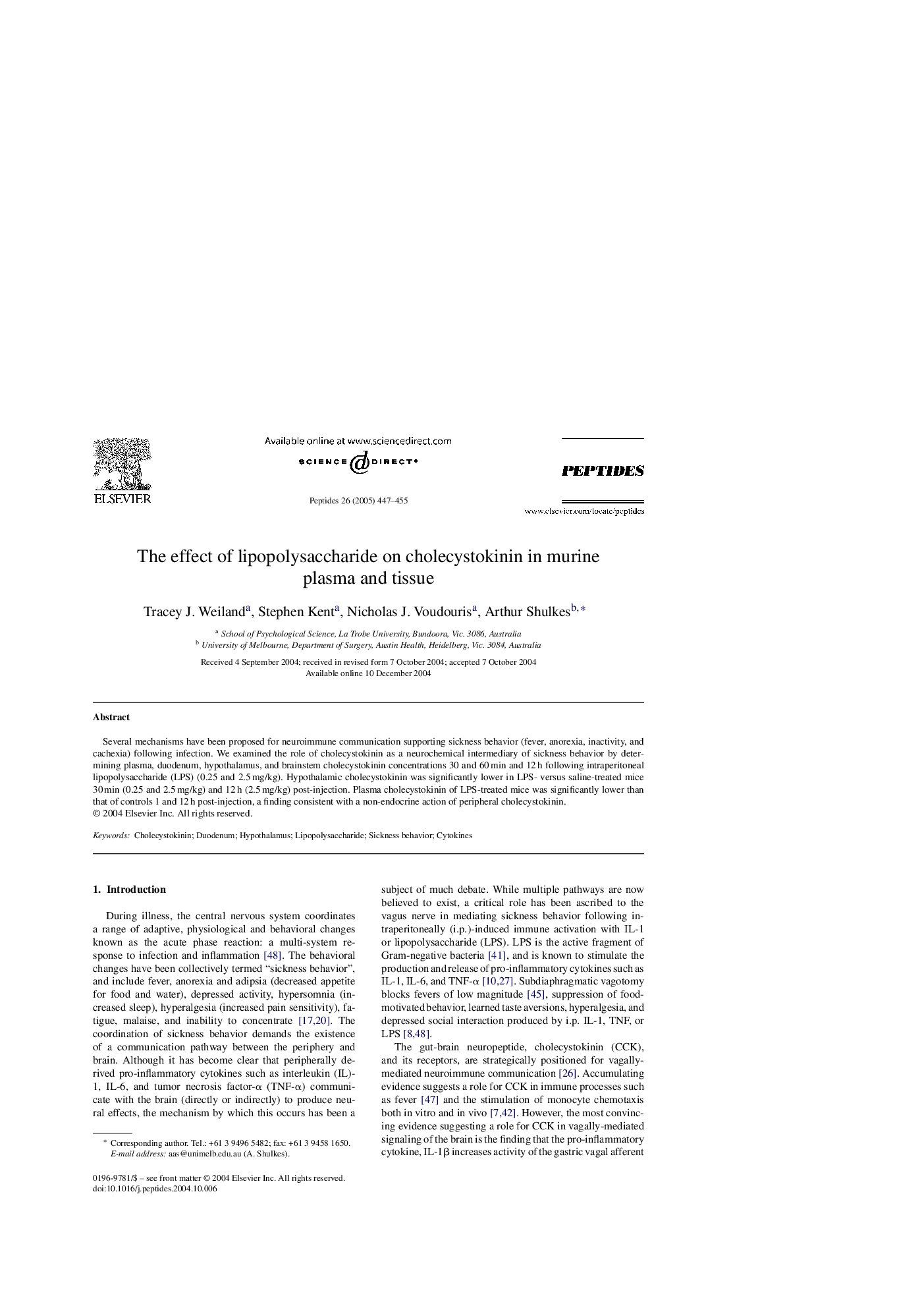| Article ID | Journal | Published Year | Pages | File Type |
|---|---|---|---|---|
| 10836968 | Peptides | 2005 | 9 Pages |
Abstract
Several mechanisms have been proposed for neuroimmune communication supporting sickness behavior (fever, anorexia, inactivity, and cachexia) following infection. We examined the role of cholecystokinin as a neurochemical intermediary of sickness behavior by determining plasma, duodenum, hypothalamus, and brainstem cholecystokinin concentrations 30 and 60Â min and 12Â h following intraperitoneal lipopolysaccharide (LPS) (0.25 and 2.5Â mg/kg). Hypothalamic cholecystokinin was significantly lower in LPS- versus saline-treated mice 30Â min (0.25 and 2.5Â mg/kg) and 12Â h (2.5Â mg/kg) post-injection. Plasma cholecystokinin of LPS-treated mice was significantly lower than that of controls 1 and 12Â h post-injection, a finding consistent with a non-endocrine action of peripheral cholecystokinin.
Related Topics
Life Sciences
Biochemistry, Genetics and Molecular Biology
Biochemistry
Authors
Tracey J. Weiland, Stephen Kent, Nicholas J. Voudouris, Arthur Shulkes,
